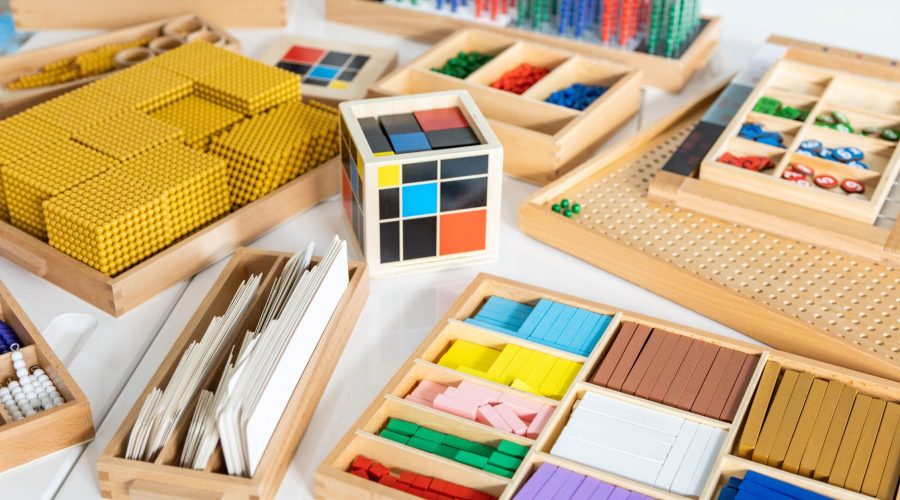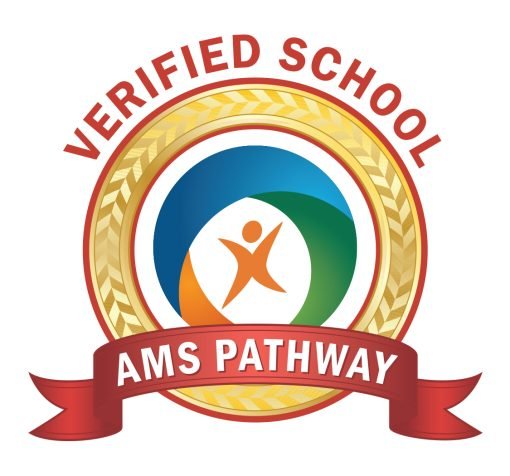Understanding mathematics can be challenging for numerous students, and even daunting for some parents. but Montessori Math works! At Montessori House for Children & Elementary School, we believe in transforming this perception of math into an engaging, comprehensive, and enjoyable experience. Our Montessori math approach helps students develop a deeper understanding of concepts by interacting with specific materials. We use the ‘Number Rods,’ ‘Spindle Box,’ and ‘Golden Beadwork’ to name a few. These tools offer children a tactile and visual grasp of abstract mathematical ideas.
What is Montessori Math?
The Montessori approach to mathematics uniquely combines tactile learning with visual and cognitive insight, ensuring that children grasp fundamental concepts deeply and thoroughly. This multi tactical approach of the Montessori Method of Math works for children and students of all ages. Through carefully designed materials and the supportive guidance of trained Montessori guides, students not only master arithmetic skills but also develop a lasting passion for learning and independent problem-solving. This foundation in mathematical understanding is a testament to the Montessori method’s effectiveness in nurturing both academic excellence and a lifelong love for learning.
The Mathematical Journey at Montessori
But the Montessori math curriculum goes beyond just mathematical concepts. Montessori Math works with the sequential use of our material and processes, children also develop critical skills, such as patience, focus, and problem-solving capabilities. Stepping into advanced levels, students learn concepts of algebra and geometry through engaging materials like the binomial and trinomial cubes, multi-base bead frames, and cubing materials.
Our accredited Montessori guides play an essential role in facilitating the child’s journey through Montessori math. Their primary role is to introduce each material, demonstrate its use, and guide the initial exploration. They observe children’s interactions with the materials and provide gentle prompts or questions to encourage deeper thinking and comprehension. By carefully preparing the environment and allowing children to explore at their own pace, Montessori guides foster a sense of independence and curiosity.
Navigating Through Number Rods
Montessori guides introduce the Number Rods by showing children how each rod represents different lengths corresponding to numbers one through ten. Through hands-on activities, children learn to arrange the rods in order, match them to corresponding numerals, and discover patterns in numbers. This process lays a solid foundation for understanding addition and subtraction, enabling children to grasp the concept of numerical relationships independently.
Mastering the Spindle Box
The Spindle Box is designed to teach students the principles of counting and to provide a concrete representation of the concept of zero. By placing the correct number of spindles in each compartment labeled from zero to nine, children develop a deep understanding of counting and the importance of the zero placeholder. This experiential learning reinforces their counting abilities and lays the groundwork for more complex arithmetic operations.
Exploring Golden Beadwork
Golden Beadwork is a crucial component of the Montessori math curriculum used to introduce children to the decimal system and basic operations like addition, subtraction, multiplication and division. Through interactive demonstrations, Montessori guides show students how to manipulate the beads to represent units, tens, hundreds, and thousands. This tactile experience helps students understand place value and arithmetic concepts.
Our curriculum also covers the basics of zero, quantity, and numbers from 1 to 10,000. It gradually advances to more complex topics, such as the decimal system, place value, and fractions. By using Golden Bead material, students can explore multiplication, division, fractions, and decimals in an engaging and hands-on manner.
What comes next in the Mathmatical Journey?
To transition to more abstract concepts, we introduce materials like the ‘Stamp Game,’ ‘bead frames,’ and the ‘Checkerboard.’ These tools help students move from concrete understanding to abstract comprehension of complex operations. Our method ensures that students not only learn math but also truly understand and enjoy the subject.
Advancing with the Stamp Game
Montessori guides use the Stamp Game to help students transition from concrete to abstract mathematical thinking. This versatile tool consists of small tiles, or “stamps,” that represent units, tens, hundreds, and thousands. By demonstrating how to use these stamps for different place values and operations, guides empower children to independently practice addition, subtraction, multiplication, and division. This practice strengthens their understanding of place value and complex arithmetic operations.
Understanding Bead Frames
Montessori guides introduce Bead Frames as a bridge between tangible beads and abstract numbers. These frames, similar to abacuses, feature rows of colored beads representing different place values. Guides demonstrate their use to visually track calculations, aiding children’s understanding of multi-digit operations. Children then work independently, using the frames to perform various mathematical operations and reinforce their understanding of the decimal system.
Delving into the Checkerboard
The Checkerboard is an advanced Montessori material used to teach multi-digit multiplication. It uses a large board marked with a grid of color-coded squares and a collection of beads. Each color represents a different place value, which helps children visualize and perform complex multiplication problems. This material helps students transition from concrete to abstract thinking by allowing them to manipulate physical objects, ensuring a deeper comprehension of mathematical concepts.
Why Montessori Math works? The Proof is in the Learning
By providing a solid foundation in math, the Montessori approach prepares children for future academic success. Students who have a strong understanding of mathematical concepts are better equipped to tackle more advanced math courses in middle and high school. They also develop critical thinking skills and problem-solving abilities that can benefit them in all areas of their lives.
But beyond just academic achievements, Montessori math fosters a love for learning that lasts a lifetime. By making math engaging and accessible through hands-on materials and supportive guidance, students develop an appreciation for the subject that goes far beyond just getting good grades. This passion for learning extends to other subjects as well, creating well-rounded individuals who are eager to explore and discover
ABOUT MONTESSORI HOUSE FOR CHILDREN & ELEMENTARY SCHOOL
Montessori House, a family-owned and operated school since 2006, provides a continuum of Montessori education for ages 16 months through 6th grade. As an AMS Verified School committed to continuous improvement, our focus on Montessori authenticity cultivates joyful, self-motivated, and confident learners. We’re not just educating; we’re shaping future leaders. Our approach fosters curiosity, independence, and self-motivated learning, valuing the whole child—emotionally, socially, ethically, and academically. Students thrive in an environment that recognizes unique talents, providing opportunities for them to achieve their highest potential. Ideal students come from families who value holistic education, embrace cultural diversity, and have a natural enjoyment of learning and self-motivation




